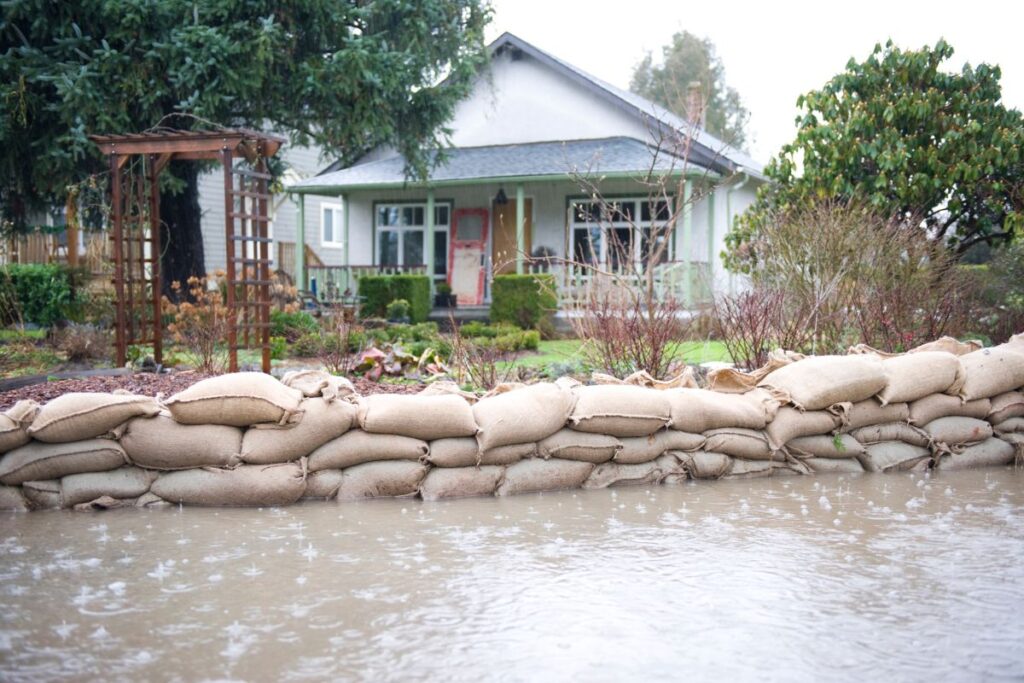
Floods can cause devastating damage, both to your home and your finances. If you live in an area prone to flooding, it’s important to be aware of the costs associated with flood insurance, as well as the pros and cons of purchasing a policy. In this blog post, we’ll provide insight into flood insurance insights, costs, cautions, tips, and more.
Contents
What is Flood Insurance?
This type of insurance provides financial protection from losses caused by floods. It covers both the cost of repairing your home and replacing any possessions that were damaged or destroyed by a flood. Examples of flooding include heavy rain, overflowing rivers and streams, snowmelt, storm surge from a hurricane or other storms, mudslides caused by eroding slopes, inland flooding, and more.
Generally speaking, homeowners insurance and home warranties do not cover damage caused by floods—so if you live in an area that’s prone to flooding, getting flood insurance, in addition to your homeowner’s policy, can help protect you from financial ruin if your home is damaged or destroyed due to flooding.
How Much Does Flood Insurance Cost?
The cost of your insurance will depend on several factors such as where you live, the size of your house, and whether or not it is located in a high-risk area (for example, those located near bodies of water). Generally speaking, the average cost for coverage ranges anywhere between $400-$2,000 per year. Additionally, there are also discounts available for certain types of homes and properties that may reduce your premiums significantly.
Cautions & Advice
When selecting a policy for flood insurance it’s important to pay attention to any exclusions or limitations included in the plan. Some policies may exclude certain types of damage such as sewage backup or mold remediation; so make sure you understand exactly what is covered before signing up for a policy. Additionally, it’s also a good idea to purchase additional coverage if necessary so that you are fully protected against any damages caused by flooding.
Flood Insurance FAQs
Many people who are looking into purchasing this type of insurance have a lot of questions about their coverage, costs, and other details. To help answer some of the most commonly asked questions, we’ve compiled some of the most frequently asked questions along with their answers.
Is all flood insurance through FEMA?
No, not all flood insurance is through FEMA. While some policies are available through the NFIP (National Flood Insurance Program) administered by FEMA, other private companies offer flood insurance as well. If you’re considering flood insurance through the National Flood Insurance Program (NFIP), be aware that there is a mandatory 30-day waiting period before coverage goes into effect. Thus, should flooding occur during this time frame, damage caused by it will remain uncovered. Fortunately, some private companies offer shorter or even no waiting periods for their policies.
Is there a limited amount of coverage I can receive?
Yes, the maximum amount of coverage available is typically $250,000 for buildings and $100,000 for personal belongings. To ensure you are covered against any potential losses, make sure to purchase enough coverage to cover the cost of replacing your home and possessions.
Can I shop around for flood insurance?
Yes, you can shop around to compare rates and coverage options. Make sure to read through any policy carefully and understand what is covered and what isn’t before purchasing.
What does flood insurance not cover?
According to NFIP, the following damages are not covered by flood insurance:
-
- Moisture, mildew and mold damage that could have been prevented by the property owner or is unrelated to the flood
- Earth-movement damage, even if the earth movement was caused by flood
- Living expenses, such as temporary housing, while your house or building is flooded or being repaired
- Financial losses caused by your business being closed
- Property and belongings outside of the insured building, such as wells, septic systems, trees, plants, decks, walks, patios, fences, hot tubs, swimming pools, and seawalls
- Most self-propelled cars
- Precious metals, currency, and valuable papers (such as stock certificates)
What is the difference between private flood insurance and NFIP?
Private flood insurance is offered by private companies and can offer more flexible coverage options compared to NFIP. However, private insurance may not be available in certain areas and may have higher premiums than NFIP.
How do you calculate flood insurance?
Flood insurance rates are calculated based on several factors such as the size of your home, its location in relation to bodies of water, and the type of coverage you have purchased. Additionally, there may be discounts available for certain types of homes or properties that could reduce your premiums significantly.
Is private flood insurance cheaper than FEMA?
It depends. Private insurance can be cheaper than FEMA in some instances, but not always. Make sure to compare rates and coverage options before making a decision.
Can flood insurance be waived?
In some cases, flood insurance may be waived if your home is in a low-risk area or if your mortgage lender does not require it. However, it’s important to keep in mind that flood damage can occur anywhere and that having flood insurance is the best way to protect yourself against unforeseen losses.
What are the zones for flood insurance?
The NFIP divides areas into three major zones – Flood Zones A, B, and C. Zone A is the highest risk for flooding and Zone C is the lowest risk. Your zone will determine how much you pay for your policy, so make sure to check what zone your home is in before purchasing flood insurance.
Is insurance higher in a flood zone?
Yes, rates for flood insurance are higher in areas designated as high-risk zones. To keep your premiums lower, make sure to invest in protective measures such as sump pumps and waterproofing systems to reduce the risk of flooding.
Does flood insurance cover mold and sewage backup?
It depends on the type of policy you’ve purchased. Generally speaking, some policies may include coverage for mold and sewage backup, while others may not. Make sure to read through your policy carefully to understand what is covered and what isn’t.
Conclusion
No one likes thinking about their home being flooded—but unfortunately, it can happen without warning at any time. That’s why having proper flood insurance is so important; it can help protect you from costly repairs (and worse) should disaster strike. Before signing up for a policy though, be sure to understand all the details including the costs involved and what type of coverage is available so that you can make an informed decision about what type of plan will work best for you and your family. Protecting yourself now could save you thousands down the line!




